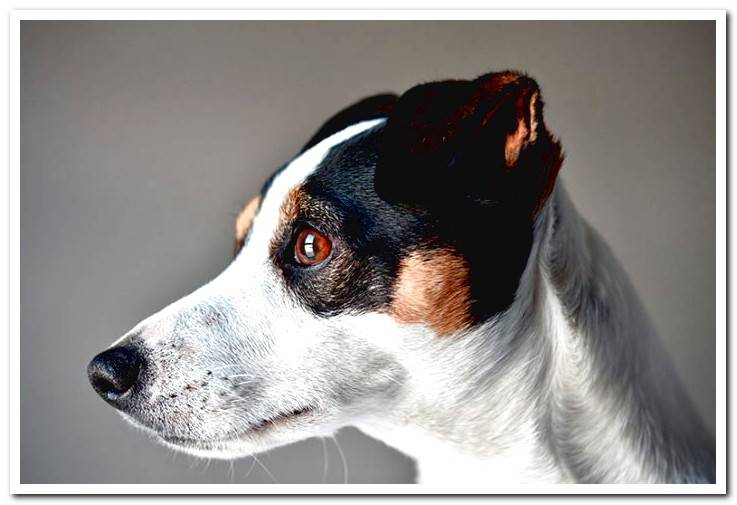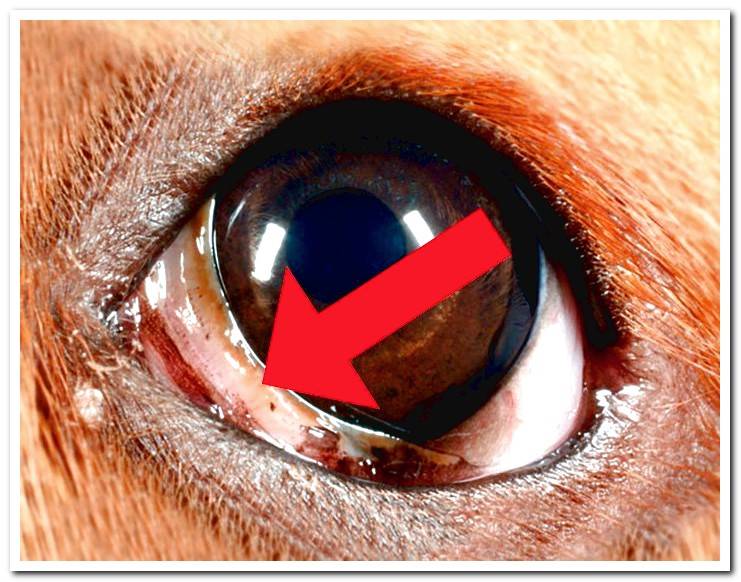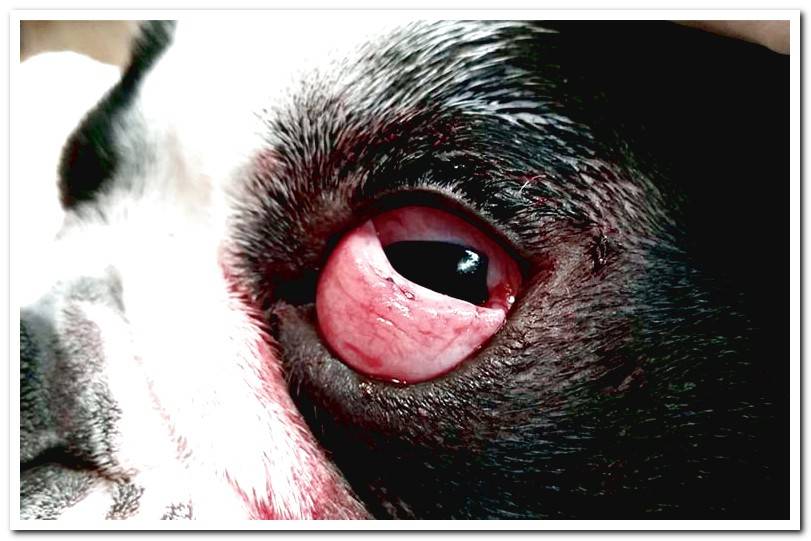
Cherry eye or encantis are the names that also receive the prolapse of the lacrimal gland of the third eyelid. It is a relatively frequent disorder, especially in small breeds.
The only possible resolution for this prolapse is surgical intervention. And it is important to perform it, since the encantis will irritate the ocular surface, and may trigger recurrent conjunctivitis. Do you want to know all the details of this pathology? Let’s see them in detail.
Index of contents
- 1 What is the third eyelid?
- 2 When the third eyelid is visible
- 3 The lacrimal gland of the third eyelid
- 4 What races suffer from prolapse of the third eyelid lacrimal gland?
- 5 Treatment of Third Eyelid Lacrimal Gland Prolapse
- 5.1 Removal of the lacrimal gland of the third eyelid
- 5.2 Repositioning of the third eyelid lacrimal gland
What is the third eyelid?
Unlike humans, we have two eyelids, the lower and the upper, dogs have three. Its third eyelid is located in the inner corner of the eye. It plays a very important role in eye health. It is also known as the nictitating membrane. Usually, the third eyelid will not be visible to us.
But sometimes, it can extend or protrude and cover the eye totally or partially. It is especially visible in response to eye pain, more common when it affects only one eye. Also, it may mean that the eye has retracted. It is a condition called enophthalmos. As it may be due to different causes, we should seek veterinary attention.
It will be this professional who gives us a diagnosis and treatment. In these cases we will appreciate perfectly the unfolded, opaque or whitish membrane, leaving from the internal angle of the eye and covering it to a greater or lesser extent. This eyelid has a lacrimal gland that can also prolapse. It is the enchanting or cherry eye.

When the third eyelid is visible
Although it may mean an eye problem, visualization of the nictitating membrane does not indicate any abnormality in some dogs. They are specimens that are born with the third eyelid unfolded.
In these cases it is only an aesthetic problem that, as such, will not require any treatment. Of course, they are not dogs that can participate in dog shows because it is considered a defect.
On the other hand, in some breeds such as the Weimaraner, the Great Dane, the Golden Retriever or the San Bernardo, what happens is that the third eyelid rolls up on itself. It is a congenital problem known as cartilage eversion.. These dogs do need treatment if the eyelid becomes irritating to the cornea.
The lacrimal gland of the third eyelid
In a normal eye, neither the third eyelid nor its gland will be visible. But in the encantis there is a weakening of the fibrous attachments inside this eyelid. In this way, the gland ends up being exposed and we will be able to appreciate it perfectly.
A pinkish, rounded lump will be seen in the inner corner of the eye that, although it may concern and impress us, it is only the gland. Given its resemblance to this fruit, the encantis is also called cherry eye.
It can appear in only one eye, although it often occurs in both eyes. The main problem with this prolapse is that it produces an irritation on the ocular surface, which ends up triggering conjunctivitis that will not go away as long as the prolapse persists.
What races suffer from prolapse of the third eyelid lacrimal gland?
This condition can occur in any dog, but it is more common in small breeds. It is considered a congenital defect and, therefore, some races will have a higher incidence. They are the Cocker spaniel, the Beagle, the Boston terrier or the Bulldog, among others.

Treatment of Third Eyelid Lacrimal Gland Prolapse
Since this prolapse is due to a weakness in the attachment of the third eyelid, the solution is to rebuild that hold. To do this, it is essential to resort to surgical intervention.
In it, the third eyelid can be removed or replaced. Also, if there is conjunctivitis, the vet will prescribe antibiotic eye drops. But it is important that we keep in mind that eye drops do not cure prolapse, only the infection it has caused.
Removal of the lacrimal gland of the third eyelid
To solve the prolapse it is easy to think that it is useful to remove the lump, that is, the lacrimal gland of the third eyelid. But this gland has an important function, since it is responsible for producing a large part of the total volume of tears in the eye.
Therefore, if the vet extracts it, we run the risk of causing a dry eye syndrome, also known as keratoconjunctivitis sicca. This is characterized by a thick discharge that can also be accompanied by conjunctivitis. It is a condition that needs lifelong treatment and even surgical intervention.
Repositioning of the third eyelid lacrimal gland
To prevent dry eye, another surgical option is to reposition and hold the third eyelid and its gland in place. In this way, the problem is solved without running the risk of causing keratoconjunctivitis. It is very important that this intervention is carried out a veterinaryn specialized in ophthalmology.
Likewise, a good postoperative is essential to avoid ruining the operation. For this we must avoid the dog touching his eye and games or sudden movements that may compromise the area. An Elizabethan necklace will be required. It is also necessary to carry out the appropriate veterinary follow-up and apply the medication that the professional provides.
